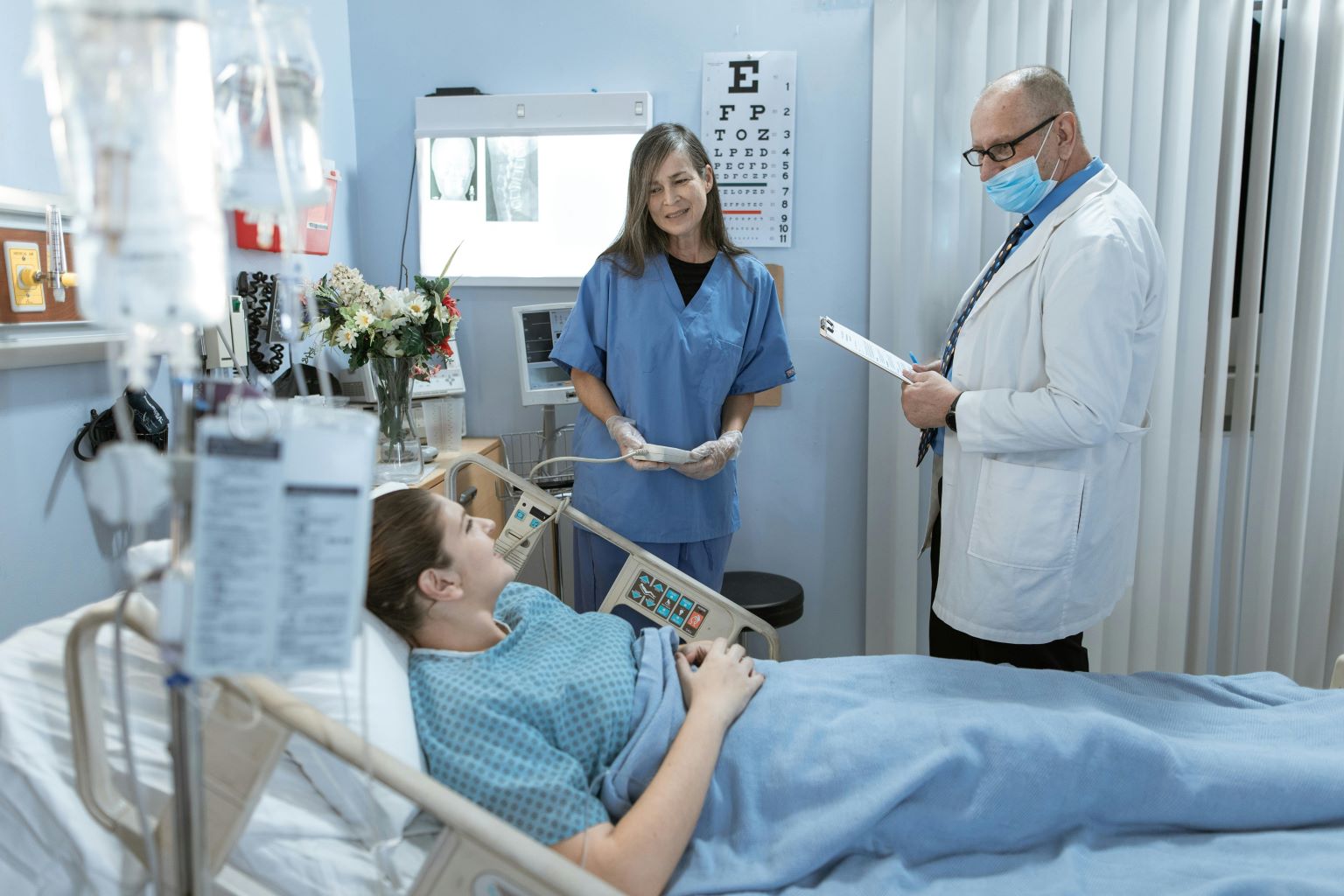
Cybersecurity has become a pressing issue in today's healthcare environment. Hospitals increasingly rely on healthcare Internet of Things (IoT) and connected medical devices, so they face growing cyber vulnerabilities. While these technologies enhance patient care and operational efficiency, they also introduce potential risks. To address these challenges, maintaining a robust inventory of healthcare IoT devices is crucial for hospitals who need to bolster their cyber defenses, reduce risks, and ensure patient safety.
The Rising Threat Landscape in Healthcare
The healthcare sector has witnessed a surge in cyberattacks in recent years. According to Check Point Research, there was a 45% increase in global healthcare cyberattacks in the last two months of 2021 alone. With ransomware attacks and data breaches rising, healthcare facilities must prioritize cybersecurity to prevent catastrophic consequences.
Healthcare IoT environments present unique challenges. Medical devices such as infusion pumps, patient monitors, and imaging systems are typically networked, creating potential gateways for cyber threats. Many of these devices lack robust security features and operate on outdated software, making them susceptible to exploitation. The intricate nature of healthcare networks, combined with the wide range of connected medical devices, adds complexity to security measures.
Why Accurate Healthcare IoT and Medical Device Inventory Matters
Reducing Cyber Vulnerabilities
One primary benefit of an accurate healthcare IoT and medical device inventory is identifying unknown or shadow devices. These devices may have been added to the network without proper documentation or oversight. By maintaining an up-to-date inventory, healthcare IT and cybersecurity teams can more easily locate and mitigate risks associated with unauthorized devices.
Outdated software and firmware are also common vulnerabilities in medical devices. An accurate inventory allows IT teams to identify devices with obsolete software, ensuring timely updates and patches. This proactive approach significantly reduces the risk of exploitation and ensure safe, reliable care delivery
Enhancing Risk Assessment
Not all devices pose the same level of risk. Accurate asset inventory management enables healthcare facilities to prioritize high-risk devices, focusing resources where they are most needed. IT teams can develop targeted security measures by assessing factors such as device criticality, usage, and connectivity.
A comprehensive device inventory clearly shows the network's attack surface. Understanding the full extent of connected devices allows security teams to implement effective segmentation and access controls, minimizing potential entry points for cyber threats.
How Advanced Asset Management Improves Healthcare Cybersecurity
Real-Time Visibility into Connected Devices
Advanced asset management solutions automatically discover and classify connected devices. This capability identifies all devices, including those often missed by manual processes. Real-time visibility allows IT teams to detect and address potential vulnerabilities quickly.
Continuous device activity monitoring helps healthcare systems identify anomalies that might signal a security breach. Healthcare facilities can spot deviations from normal patterns by analyzing real-time data and quickly respond to potential threats.
Streamlined Vulnerability Management
Rapid identification of affected devices is critical in the event of a security incident. Asset management solutions provide the tools needed to locate compromised devices swiftly, enabling swift containment and remediation efforts.
Effective vulnerability management hinges on smart prioritization. Healthcare organizations can prioritize patching efforts based on device criticality and vulnerability severity by leveraging real-time data and risk assessments, ensuring that high-risk medical devices are addressed first.
Accelerating Threat Detection and Response
AI and machine learning technologies equip healthcare organizations with advanced tools to detect anomalies in device behavior. By analyzing vast amounts of data, AI-driven solutions can identify subtle indicators of compromise that might go unnoticed by traditional security methods.
Indicators of compromise (IoCs) are early warning signs of a security breach. Advanced asset management solutions with AI capabilities can recognize IoCs in real-time, enabling healthcare facilities to respond swiftly and effectively.
The ability to quickly locate and isolate compromised devices is essential in mitigating the impact of a cyberattack. Asset management solutions provide real-time insights that enable healthcare IT teams to take decisive action, preventing the spread of threats and minimizing disruption to patient care.
Enhancing Overall Network Security
Network segmentation is a fundamental aspect of cybersecurity. By implementing micro-segmentation policies, healthcare facilities can isolate critical systems and limit lateral movement in case of a breach. This approach enhances the overall security posture by reducing the attack surface.
Asset management solutions work with existing security infrastructure, enhancing the effectiveness of security information and event management (SIEM) systems and firewalls. This integration provides a holistic network view, enabling more informed decision-making and proactive threat mitigation.
Zero trust is a security framework that assumes threats may exist inside and outside the network perimeter. Asset management solutions support zero trust initiatives by continuously monitoring and verifying device activity, ensuring that only authorized devices have access to critical resources.
Compliance and Reporting Benefits
Healthcare organizations must comply with many regulatory requirements, including HIPAA and FDA guidelines. Accurate device inventory and monitoring data facilitate compliance by providing comprehensive security measures and controls documentation.
Audits are an integral part of maintaining compliance. Asset management solutions simplify audit processes by generating detailed reports on device status, risks, and security measures. This comprehensive documentation streamlines audit preparation and demonstrates due diligence in managing cybersecurity risks.
Best Practices for Implementing Advanced Asset Management
Selecting the right asset management solution is crucial for effective cybersecurity. Healthcare organizations should evaluate potential solutions based on factors such as scalability, ease of integration, and real-time monitoring capabilities.
An effective asset management platform should offer features such as automated discovery and classification, continuous monitoring, vulnerability assessment, and smooth integration with existing security infrastructure. These capabilities provide a solid foundation for enhancing cybersecurity and managing healthcare IoT assets.
How Cylera is Pioneering Healthcare IoT Security and Asset Management
Cylera is a leader in healthcare IoT security, offering a comprehensive platform that addresses the unique challenges of medical device cybersecurity. By focusing on real-time visibility and threat detection, Cylera strengthens healthcare organizations' cyber defenses.
Cylera's platform provides deep insights into connected medical devices, enabling healthcare facilities to identify and mitigate vulnerabilities effectively. By using AI and machine learning, Cylera enhances threat detection and response capabilities, ensuring the highest level of security.
Cylera's solution offers real-time device monitoring, automated threat detection, and integration with existing security infrastructure. These capabilities allow healthcare organizations to enhance their cyber defenses, protect patient data, and ensure the safe operation of connected medical devices.
Conclusion
Strengthening hospital cyber defenses is a top priority in today's healthcare landscape. With the increasing reliance on connected medical devices, healthcare organizations must adopt advanced asset management and cybersecurity solutions to safeguard their networks. By maintaining an accurate inventory of IoT and medical devices, healthcare facilities can reduce vulnerabilities, accelerate threat detection and response, and enhance overall network security.
Healthcare organizations are encouraged to prioritize the implementation of robust asset management solutions to maintain a strong defense against cyber threats and protect patient safety. By partnering with industry leaders like Cylera; healthcare facilities can confidently navigate the complex cybersecurity landscape and deliver secure, high-quality care to patients.
